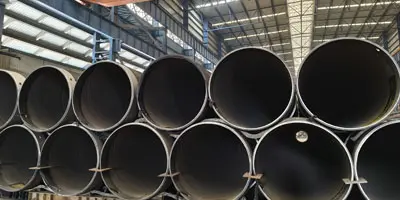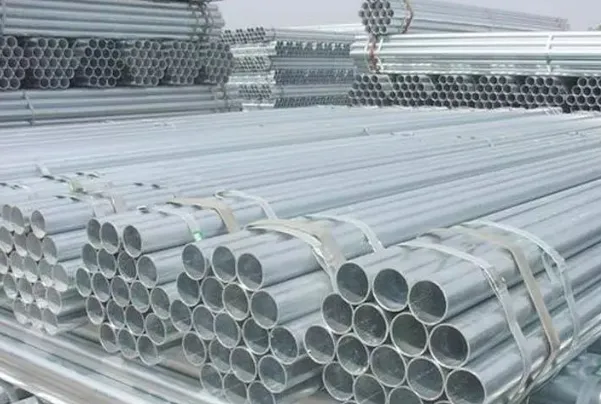Galvanized seamless steel pipes are widely used in a variety of industries, including construction, transportation, and oil & gas, due to their excellent corrosion resistance and durability. These pipes are coated with a layer of zinc to protect them from rust and degradation. However, ensuring the quality of galvanized seamless steel pipes is essential for their performance and longevity. This guide will provide an overview of the key quality checks that should be conducted during the production, inspection, and testing of galvanized seamless steel pipes.
Galvanized seamless steel pipes come in two types: hot-dip galvanizing and electro-galvanizing (cold galvanizing). Hot-dip galvanized pipes have a thicker zinc coating, providing uniform coverage, strong adhesion, and long service life. In contrast, electro-galvanized pipes are more cost-effective but offer lower corrosion resistance and a less smooth surface.
To ensure the quality of galvanized seamless steel pipes, manufacturers conduct inspections based on industry standards. Key quality checks include wall thickness, outer diameter, ovality, length, bending degree, and end shape. Let’s go through each of these inspection steps in detail.
1. Wall Thickness Measurement
Wall thickness is measured using a micrometer. Before the inspection, it’s essential to confirm that the micrometer is calibrated, aligned to zero, and free of rust or scratches.
During the inspection, the micrometer should be firmly held, with the measuring screw perpendicular to the pipe’s diameter. The measurement should be taken at no fewer than six points along the pipe’s cross-section. If any discrepancies are found, the pipe should be marked for further assessment.
2. Outer Diameter and Ovality Check
The outer diameter and ovality of the pipe are inspected using calipers or vernier calipers. The caliper must be properly calibrated before use, and the measuring surface should be clean and free of damage.
To measure, position the caliper perpendicular to the pipe’s axis and rotate the pipe slowly. If the outer diameter is found to be outside the acceptable tolerance range, it should be flagged for review.
Outer Diameter (OD): The pipe’s outer diameter should be consistent with the specified dimensions, as any variation can affect the pipe's compatibility with fittings and joints.
Wall Thickness: The thickness of the pipe's wall plays a critical role in its strength and resistance to pressure. The wall thickness should meet the standards defined in the relevant specifications (such as
ASTM A106 or EN 10210).
Length: Ensure the length of the pipe is within the specified tolerance. Pipes that are too short or too long can cause difficulties during installation and handling.
3. Length Measurement
To measure the length of a galvanized seamless steel pipe, a steel tape is used. The zero mark of the tape should be aligned precisely with one end of the pipe, then stretched along the pipe’s surface until the other end is reached. The recorded value is the pipe’s length.
4. Bending Degree Inspection
The inspection of bending degree of galvanized pipe is mainly to inspect the bending degree of the total length of galvanized pipe and the degree of bending per meter. The tools used are mainly level ruler, feeler gauge and fishing line. When measuring the total bending degree of the galvanized pipe, use the fishing line to align one end of the galvanized square pipe, then tighten the fishing line so that one side of the fishing line is close to the surface of the galvanized pipe, and then use a feeler gauge to measure the surface of the galvanized pipe and the fish. The line gap spacing, that is, the total length of the galvanized seamless pipe.
5.Coating Thickness Measurement
The thickness of the galvanized coating is one of the most critical factors determining the pipe's corrosion resistance. If the coating is too thin, the pipe will not be sufficiently protected against rust and environmental damage.
The common methods used to measure the thickness of the zinc coating include:
Magnetic Induction Method: This is a non-destructive testing method commonly used for measuring the coating thickness. A special instrument is used to measure the magnetic flux and calculate the thickness of the zinc layer.
Eddy Current Testing: Eddy current devices can also measure coating thickness and are particularly useful when the pipe is made from a non-ferrous material.
Micrometer: In some cases, micrometers or other manual tools are used to measure coating thickness, but this method is less precise and often used for smaller or sample tests.
The coating thickness should comply with the specifications of the relevant standards. For instance, according to ASTM A53, the zinc coating should have a minimum thickness of 1.8 oz/ft².
6. Bend Test
A bend test is used to assess the ductility and flexibility of the galvanized seamless steel pipe. The pipe is bent to a certain angle to determine its ability to resist cracking or breaking. This test is important for applications where the pipe will be subjected to bending forces during installation.
Bending Radius: The radius at which the pipe is bent is critical in determining its flexibility. The pipe should bend without cracking or breaking.
Cracking or Fracturing: If the pipe cracks or fractures during the bend test, it may be a sign of poor quality material or insufficient coating protection.
7. Impact Test
An impact test measures the pipe's ability to withstand sudden forces or shocks. This is especially important for applications in harsh environments, such as in the oil and gas industry.
The pipe is subjected to a high-energy impact to assess its toughness. The impact energy required to fracture the pipe should be within the standard requirements.
8. Corrosion Resistance Test
Despite the protective coating, galvanized pipes may still be susceptible to corrosion under certain conditions. To assess the effectiveness of the galvanization, a corrosion resistance test is performed.
Salt Spray Test: This test involves exposing the galvanized pipe to a salt mist in a controlled environment to simulate corrosive conditions. The amount of corrosion observed on the surface of the pipe over time can help determine the quality of the galvanizing process.
Accelerated Aging: The pipe may also be subjected to accelerated aging conditions (such as heat and humidity) to simulate long-term environmental exposure.
9. Documentation and Certification
Finally, once all tests have been completed and the pipe has passed all necessary quality checks, proper documentation should be provided. This typically includes:
Test Reports: Detailed reports outlining the results of each test, including measurements and findings.
Certification: A certificate of compliance to confirm that the pipe meets industry standards and specifications.
Batch Number: This ensures traceability in case any issues arise with the galvanized steel pipes after they have been installed or used.
Quality inspection method for galvanized seamless steel pipe:
1. Chemical composition analysis: chemical analysis method, instrumental analysis method (infrared C-S instrument, direct reading spectrometer, zcP, etc.).
① Infrared C-S instrument: analysis of ferroalloys, steelmaking raw materials, C and S elements in steel.
② Direct reading spectrometer: C, Si, Mn, P, S, Cr, Mo, Ni, Cn, A1, W, V, Ti, B, Nb, As, Sn, Sb, Pb, Bi in block samples ③ N-0 instrument: gas content analysis N, O2. Chemical performance inspection of steel pipe:
① Tensile test: measure stress and deformation, determine the strength (YS, TS) and plasticity index (A, Z) of the material Longitudinal and transverse samples Pipe section, arc, circular sample (¢10, ¢12.5) Small diameter, thin wall Large diameter, thick wall Fixed calibration distance. Note: The elongation of the specimen after fracture is related to the specimen size GB/T 1760②Impact test: CVN, notch C type, V type, work J value J/cm2 Standard specimen 10×10×55 (mm) Non-standard specimen 5×10×55 (mm)③Hardness test: Brinell hardness HB, Rockwell hardness HRC, Vickers hardness HV, etc.④Hydraulic test: test pressure, stabilization time, p=2Sδ/D3. Process performance test of galvanized seamless steel pipe:
① Flattening test: round specimen C-shaped specimen (S/D>0.15) H=(1+2)S/(∝+S/D) L=40~100mm Unit length deformation coefficient=0.07~0.08② Ring pull test: L=15mm No crack is qualified③ Flaring and curling test: The top taper is 30°, 40°, 60°④ Bending test: It can replace the flattening test (for large-diameter pipes) Galvanized seamless pipes are non-ferrous metals, and non-ferrous metals have poor adhesion than black metals. The commonly used alkyd iron red primer and epoxy iron red primer on the market are not suitable for galvanized parts as long as they contain iron oxide red anti-rust pigments, otherwise they will easily fall off. It should be pointed out that the use of alkyd paint on galvanized parts will cause saponification reaction, which will not only fail the coating, but also damage the original galvanized layer.
The substrate (anti-rust primer) suitable for galvanized parts includes Haile brand galvanized pipe special primer (two-component).
Pre-treatment of galvanized parts before painting:
1. If conditions permit, galvanized parts can be phosphated, or a thin layer of phosphating primer can be sprayed first.
2. Or the smooth surface of galvanized parts can be sanded or polished.
3. Wipe the surface of galvanized workpieces and galvanized pipes with solvent (i.e. epoxy thinner) to remove the original protective layer of the workpiece and increase the cleanliness.
Conclusion
Strict quality control is essential to ensure galvanized seamless steel pipes meet industry standards for strength, durability, and corrosion resistance. By conducting thorough inspections of wall thickness, outer diameter, ovality, length, and bending, manufacturers can provide high-quality, reliable pipes suitable for construction, infrastructure, and industrial applications.






 English
English Español
Español بالعربية
بالعربية











 Phone :
Phone :  Whatsapp :
Whatsapp :  Email :
Email : 


